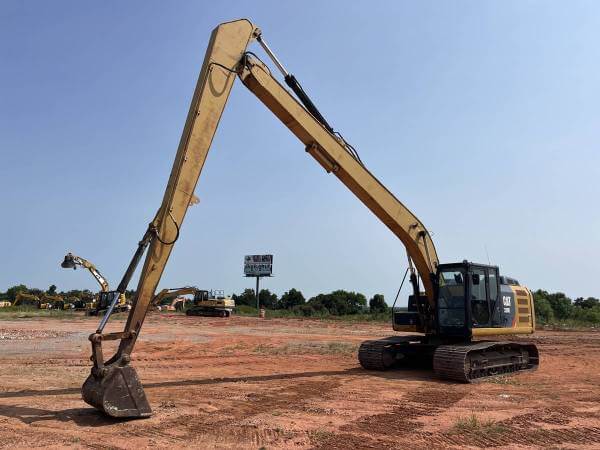Long front boom of an excavator cannot only focus on the quality of the product itself, but daily maintenance and use and maintenance are also equally important. So what do we need to pay attention to? This article will introduce it to you.
The importance of regular inspection and maintenance of long front boom of an excavator
While initial quality testing is critical, regular inspection and maintenance of long forearms are equally important. Over time, even the best arms will have problems due to wear and tear. Regular inspections using some of the same methods mentioned above, such as visual inspection and ultrasonic testing, can detect early signs of deterioration.
Regular hydraulic load testing, especially after the arm has been used for a lot of heavy tasks, ensures that it continues to operate within safe parameters. Surface hardness will also decrease over time, especially if the arm is constantly exposed to abrasives, so regular hardness testing can help evaluate whether the arm’s protective coating or surface treatment has stood up to the test.
-
Long front boom of an excavatorcommon problems and their solutions
While testing the quality of long forearms is critical, it is also helpful to understand the common problems that occur in excavator arms and their solutions. Here are some typical problems:
2.1. Boom cracks
Cracks, especially around high stress areas such as joints or welds, are a common problem. These cracks can be caused by repeated stress or material defects. To address crack issues, cracks must be detected early through visual inspection or non-destructive testing methods such as ultrasonic testing or MPT. Depending on the severity, cracks can be repaired by welding or replacing the affected section.
2.2. Wear and Corrosion
Excavator booms, especially those used in harsh environments such as mining or demolition, can experience severe wear or corrosion. Surface treatments such as painting or coatings can protect the boom from the elements, but if signs of wear or corrosion are found during inspection, these protective measures may need to be reapplied. In addition, hardness testing can reveal if the surface has been damaged.
2.3. Hydraulic Failure
In some cases, the boom may begin to show signs of weakness under hydraulic pressure. This is usually caused by fatigue due to overuse or insufficient material strength. Hydraulic testing can detect these weaknesses before they lead to catastrophic failure. If the boom fails the hydraulic load test, it may need to be reinforced or, in extreme cases, completely replaced.
2.4. Misalignment or Twisting
Improper use or overloading of the boom can lead to misalignment or twisting, which can cause inefficient operation and increased wear on other machine components. Dimensional measurements during inspection can detect any misalignment early. Correcting misalignment may require remachining parts of the boom or adjusting mounting points.
-
Ensure long front boom of an excavator operator safety and efficiency
The quality of the long front boom of an excavator has a direct impact not only on the performance of the excavator, but also on the safety of the operator. A damaged boom can fail under load, causing damage to the machine and potentially leading to a dangerous accident. Ensuring that the boom meets all safety standards through rigorous testing is essential to maintaining a safe working environment.
In addition, a high-quality, well-maintained boom improves the efficiency of the excavator, allowing it to perform at its maximum potential. When the boom is in good condition, the machine can run smoothly and handle heavy loads with ease, minimizing downtime due to repairs or replacements. This ultimately increases productivity and saves costs for the operator or company.
Conclusion
Inspecting the quality of an long front boom of an excavator is a critical task that requires a combination of advanced testing equipment, comprehensive inspection methods, and detailed analysis of key quality items. From ultrasonic and magnetic particle testing to hydraulic load testing and hardness evaluation, each testing method provides important insights into the boom’s structural integrity and performance capabilities. Regular inspection and maintenance, as well as the use of precision testing equipment, can help detect potential problems early, ensuring that the boom remains safe, durable and efficient while in operation.
By focusing on key quality factors such as material integrity, weld quality, structural alignment, stress resistance and surface hardness, operators can not only ensure the long-term durability of the boom, but also protect their equipment and workers. In heavy-duty environments where excavator performance is critical, the reliability of the long forearm is a factor that cannot be ignored.






Leave A Comment